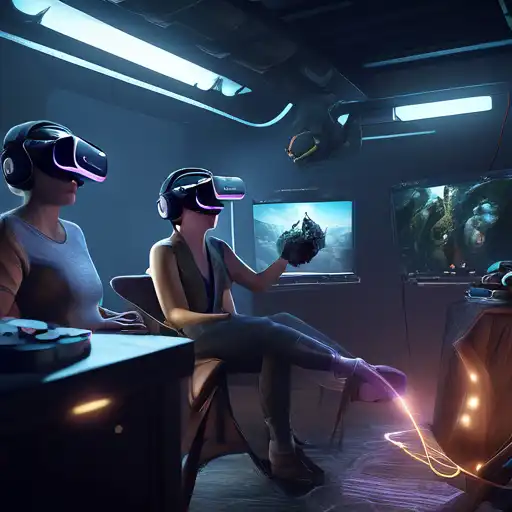Introduction to Virtual Reality
Virtual Reality (VR) has transformed the way we interact with digital content, offering unparalleled immersive experiences. From gaming to education, VR's applications are vast and varied. This guide will walk you through the essentials of creating immersive VR experiences that captivate and engage.
Understanding the Basics of VR
Before diving into VR development, it's crucial to grasp the foundational elements that make VR unique. These include the hardware (like headsets and controllers) and software (such as development platforms and engines) that bring virtual worlds to life.
Choosing the Right Tools
Selecting the appropriate tools is a pivotal step in VR development. Popular engines like Unity and Unreal Engine offer robust support for VR projects, providing developers with the resources needed to create detailed and interactive environments.
Designing for Immersion
Immersion is the cornerstone of any successful VR experience. Here are key factors to consider:
- User Interface (UI): Design intuitive and non-intrusive UI elements that enhance the user's experience without breaking immersion.
- Audio: Spatial audio plays a critical role in creating a believable virtual environment.
- Interactivity: Ensure that users can interact with the environment in meaningful ways to deepen engagement.
Optimizing Performance
VR applications demand high performance to prevent motion sickness and ensure a smooth experience. Optimizing your VR project involves:
- Reducing polygon counts in 3D models.
- Implementing efficient lighting solutions.
- Regular testing on target hardware to identify and address performance bottlenecks.
Testing and Iteration
Testing is an ongoing process in VR development. Gathering user feedback and making iterative improvements is essential for refining the experience. Consider conducting user testing sessions to identify areas for enhancement.
Publishing Your VR Experience
Once your VR project is polished and ready, the next step is publishing. Platforms like SteamVR and Oculus Store offer avenues for distributing your VR application to a wide audience.
Conclusion
Creating immersive VR experiences is a complex but rewarding endeavor. By understanding the basics, choosing the right tools, designing for immersion, optimizing performance, and engaging in thorough testing, developers can craft VR experiences that stand out in the burgeoning virtual reality landscape.
